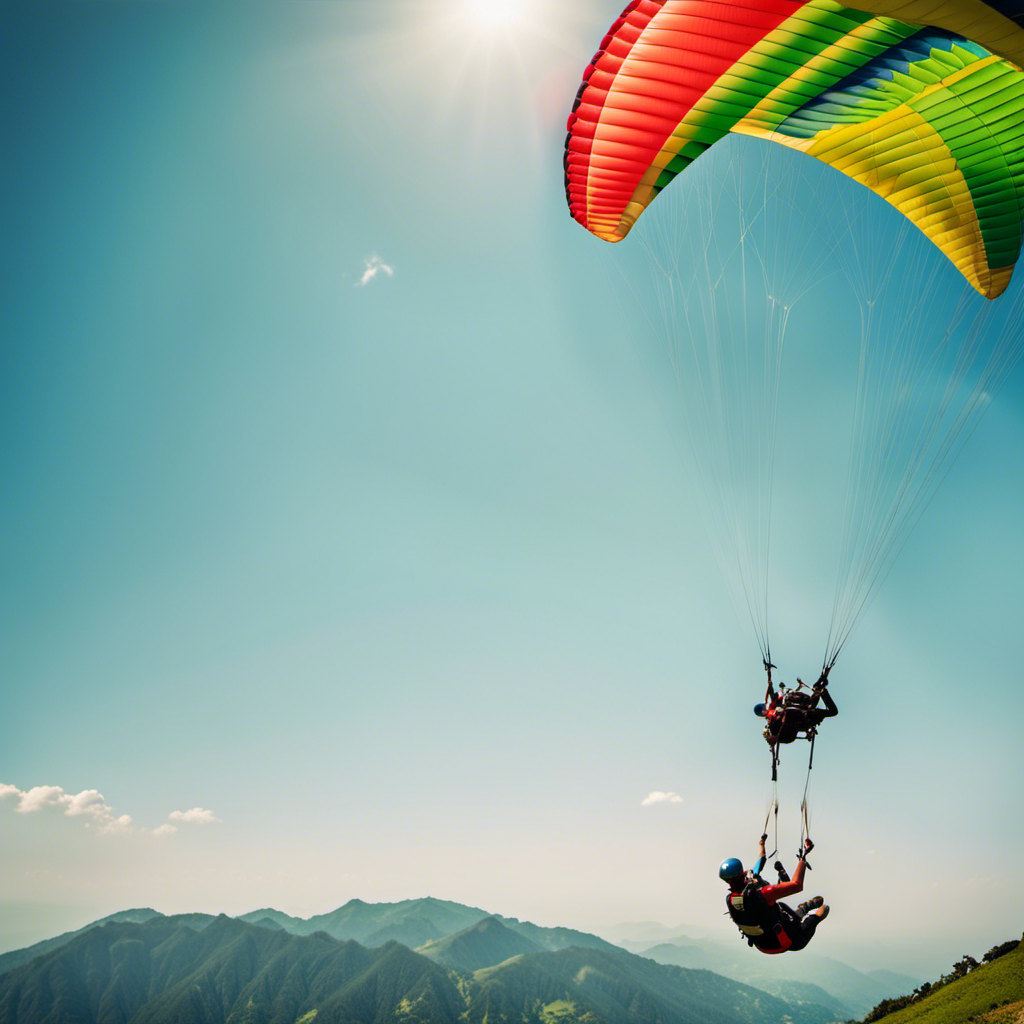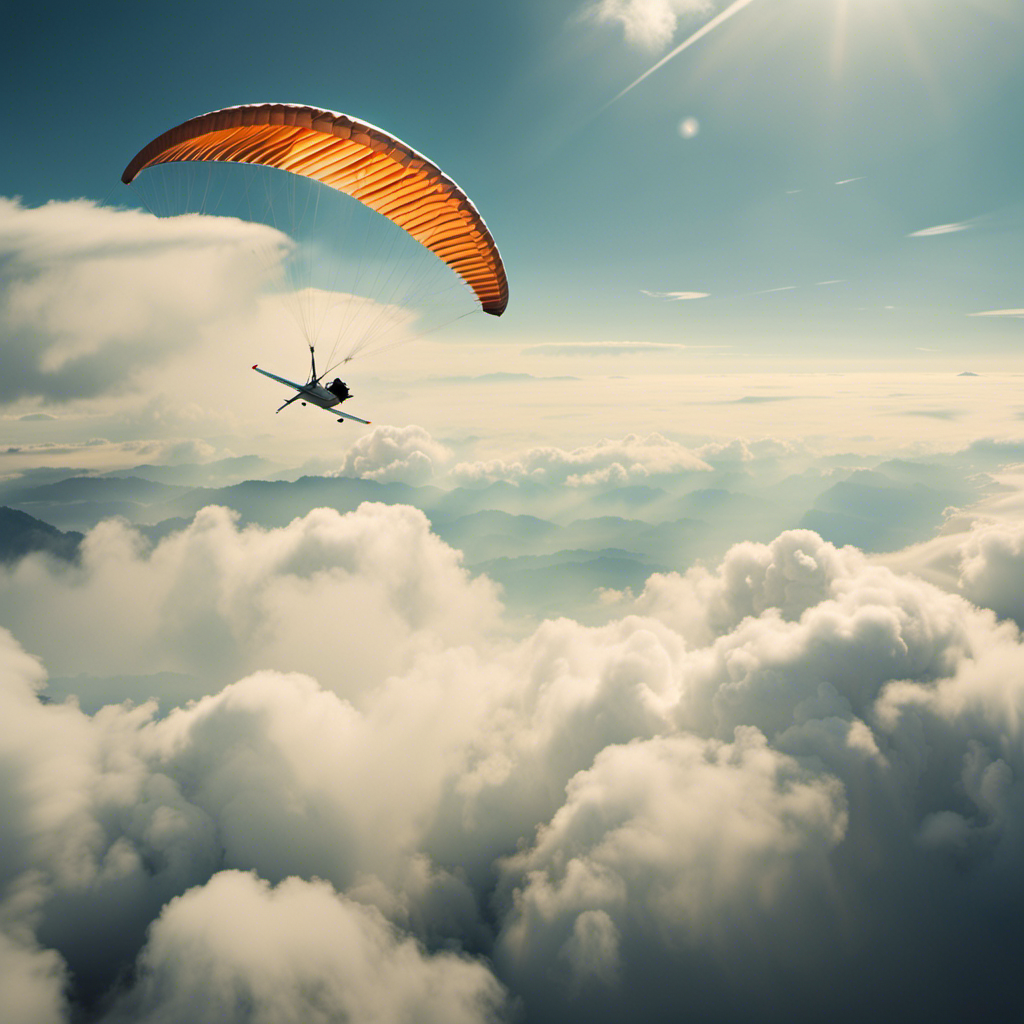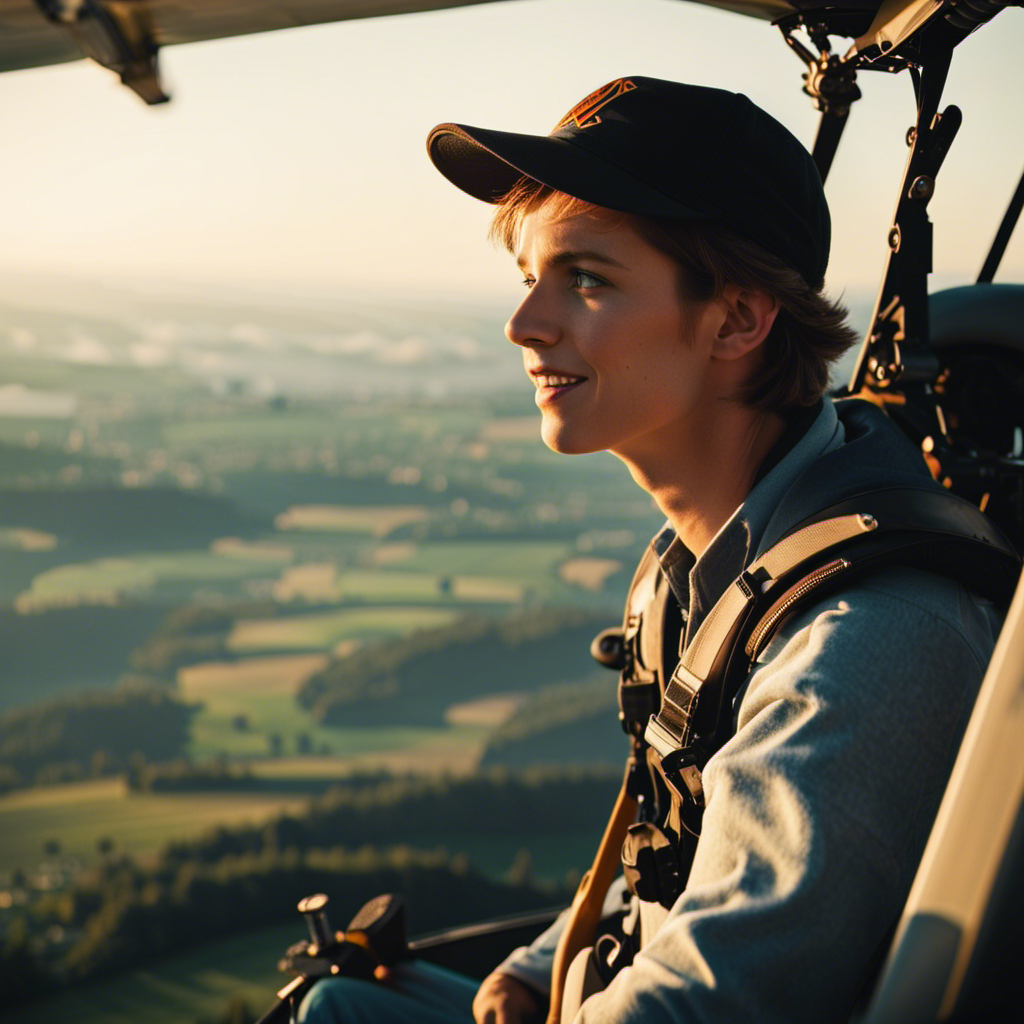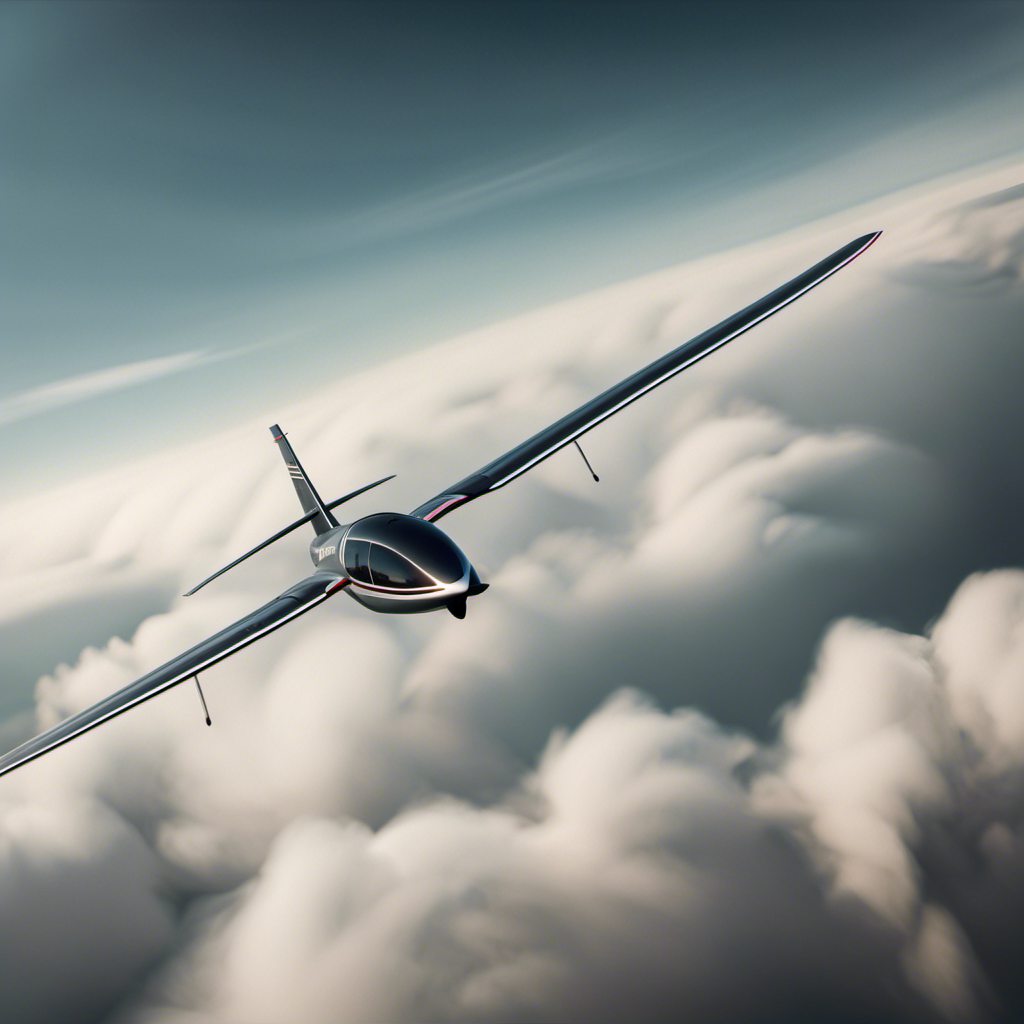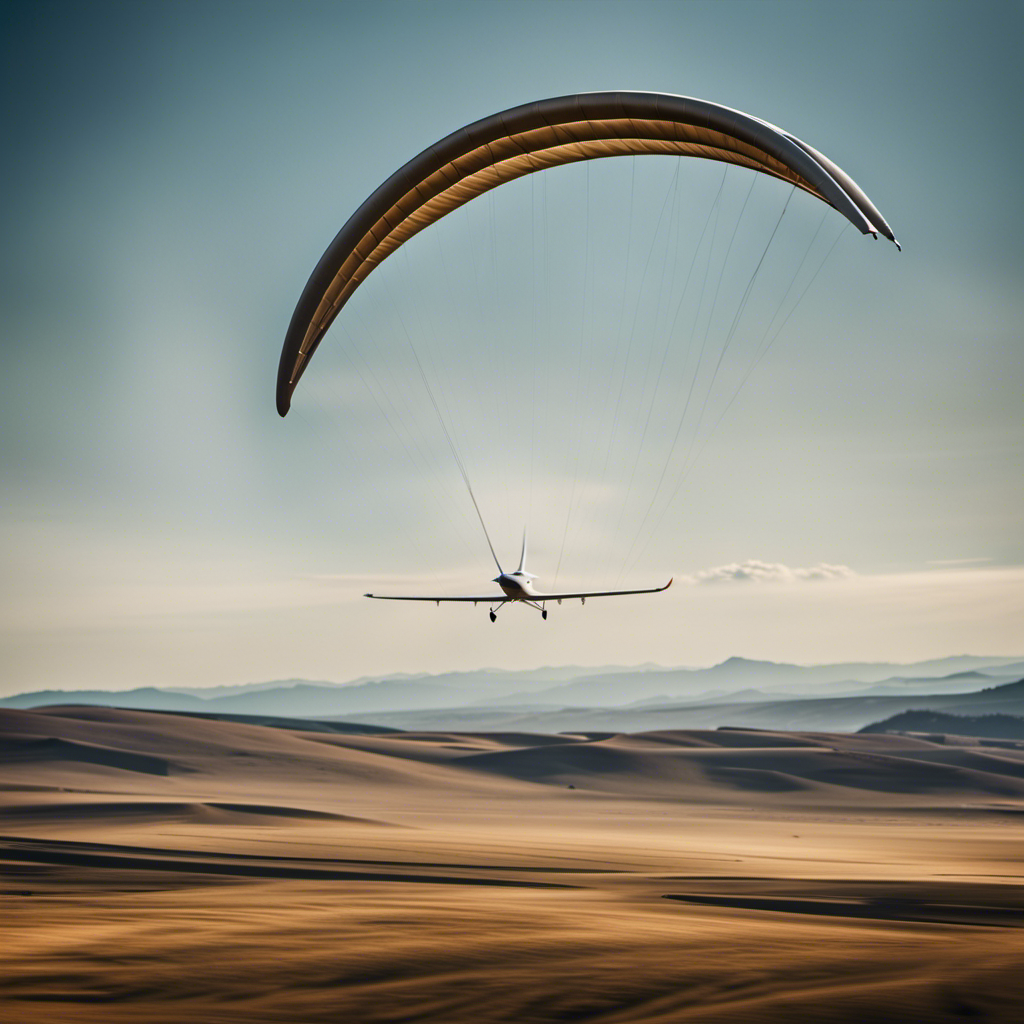Gliding through the air, with the wind sweeping around me, I feel a sense of excitement and freedom. Para gliding goes beyond just a hobby; it represents a way of life.
In this article, I’ll be your guide, taking you on a thrilling journey into the world of para gliding. From the history and evolution of this incredible sport to the equipment needed and safety measures to keep in mind, we’ll cover it all.
So buckle up, because it’s time to spread your wings and fly!
Key Takeaways
- Master landing techniques and maneuvers such as flare landing and spot landing for precision and control.
- Explore popular paragliding destinations like Interlaken, Switzerland and Cape Town, South Africa for breathtaking views and thrilling flights.
- Prioritize safety by following guidelines, using proper equipment, and staying aware of weather conditions.
- Join paragliding communities for networking, learning, and access to training programs and discounts.
History and Evolution of Paragliding
Paragliding has come a long way since the 1970s when you could only glide for a few minutes. Now, you can soar through the skies for hours.
Over the years, paragliding has experienced several evolutionary milestones, transforming from a mere experimental activity to a thrilling adventure sport. This evolution can be attributed to the efforts of famous paragliding pioneers who pushed the boundaries of what was possible.
These pioneers, through their determination and passion, paved the way for advancements in wing design, safety measures, and techniques. They not only made paragliding accessible to the masses but also contributed to the development of a global community of paragliders.
As paragliding continues to evolve, it has become a popular recreational activity for thrill-seekers around the world. Now, let’s explore the equipment and gear needed for this exhilarating experience.
Equipment and Gear Needed for Paragliding
To get started in paragliding, you’ll need a few essential pieces of equipment and gear. First and foremost, you’ll need a paraglider, which is the main wing that allows you to glide through the air. This is typically made of lightweight fabric and has a harness attached to it. The harness is what you will sit in during your flight, providing comfort and support. Additionally, you’ll need a reserve parachute, just in case of any emergencies. Other important gear includes a helmet to protect your head, sturdy boots for takeoff and landing, and a variometer to measure altitude and climb rates. These are just a few examples of the essential equipment needed for paragliding.
Now that you have the necessary gear, it’s important to discuss the safety measures and precautions to take while paragliding.
Safety Measures and Precautions
Now that you’ve got all the necessary gear, it’s important to discuss the safety measures and precautions you should take while paragliding. Safety should always be a top priority when engaging in any adventure sport, and paragliding is no exception. Here are four key safety measures to keep in mind:
-
Wear the right safety equipment: Make sure you have a certified helmet, a reserve parachute, and a harness with built-in back protection. These items are essential for your safety and protection during flight.
-
Check weather conditions: Before taking off, always check the weather forecast. Avoid flying in strong winds, storms, or turbulent conditions that may compromise your safety.
-
Follow emergency procedures: Familiarize yourself with the emergency procedures provided by your instructor. Practice how to deploy your reserve parachute and perform emergency landings to ensure you can react quickly and effectively in case of any unforeseen circumstances.
-
Stay current with your training: Regularly attend refresher courses to stay up-to-date with the latest safety techniques and procedures. Continuously improving your skills and knowledge will help you become a safer and more responsible paraglider.
By following these safety measures and precautions, you can enjoy the thrill of paragliding while minimizing the risks involved.
Now, let’s dive into finding the right paragliding school or instructor, which is crucial for your learning journey.
Finding the Right Paragliding School or Instructor
Make sure you research and choose a paragliding school or instructor who has a good reputation and experience in teaching students. When it comes to paragliding, the right equipment is crucial for your safety and enjoyment. Here is a helpful table to guide you in choosing the right paragliding equipment:
| Equipment | Description |
|---|---|
| Wing | The main canopy that provides lift and control |
| Harness | Secures you to the wing and offers comfort |
| Reserve Parachute | A backup parachute in case of emergencies |
| Helmet | Protects your head from potential injuries |
| Variometer | Provides altitude and vertical speed information |
Learning paragliding with a certified instructor offers numerous benefits. They have the knowledge and expertise to guide you through the learning process, ensuring your safety and progress. With proper instruction, you will learn the necessary skills, such as launching, landing, and controlling the wing. This will lay the foundation for your paragliding journey. Transitioning into the subsequent section about ‘learning the basics of paragliding,’ you will gain a solid understanding of the fundamental techniques and maneuvers that will make you a confident paraglider.
Learning the Basics of Paragliding
Learning the basics of paragliding is essential for developing the necessary skills and knowledge to become a confident pilot. When it comes to learning techniques, it’s important to find a reputable paragliding school or instructor who can provide proper guidance.
They will teach you everything from understanding the equipment to mastering takeoff and landing procedures. As a beginner, you will spend time practicing maneuvers such as turns, stalls, and weight shifting. These exercises will help you gain control and improve your overall flying skills.
Once you feel comfortable with these basics, you can move on to understanding weather conditions and flight planning. This knowledge is crucial as it allows you to assess the safety and feasibility of each flight, ensuring a smooth and enjoyable experience in the air.
Understanding Weather Conditions and Flight Planning
Understanding weather conditions and flight planning is essential for ensuring a safe and enjoyable paragliding experience. As a paraglider, I rely on accurate weather forecasting to determine the best time to take flight. By monitoring weather patterns, I can identify potential hazards such as strong winds or storms that could jeopardize my safety.
Additionally, flight navigation is crucial for successful paragliding. I need to plan my route carefully, considering factors like wind direction, thermals, and topography. This ensures that I can maximize my time in the air and avoid obstacles or restricted airspace.
By understanding weather conditions and carefully planning my flights, I can have a thrilling and worry-free paragliding adventure.
Now, let’s dive into the exhilarating experience of taking your first solo flight.
Taking Your First Solo Flight
As you prepare for your first solo flight, it’s important to remember all the skills you’ve acquired and trust in your abilities to navigate the skies. It’s completely natural to feel a mix of excitement and nervousness, but with proper preparation, you can overcome any fear and build your confidence.
Here are a few key things to keep in mind as you embark on this thrilling adventure:
- Visualize success: Picture yourself soaring through the air with ease and grace.
- Focus on your breathing: Take deep breaths to calm your nerves and stay centered.
- Stay attuned to your surroundings: Observe the wind patterns and listen to the sounds of nature.
- Trust your equipment: Your gear is designed to keep you safe, so have faith in its reliability.
- Believe in yourself: Remember all the training you’ve gone through and trust in your abilities.
With these tips in mind, you’re ready to take off and experience the exhilaration of your first solo flight.
Now, let’s explore some advanced techniques and tricks for experienced paragliders.
Advanced Techniques and Tricks for Experienced Paragliders
Now that you’ve mastered the basics of paragliding, it’s time to delve into some advanced techniques and tricks to elevate your skills to new heights.
Advanced landing techniques are crucial for experienced paragliders. One technique is the ‘flare landing,’ where you control your speed and descent rate by pulling down on the rear risers just before touchdown. This helps you land smoothly and with minimal impact.
Another technique is the ‘spot landing,’ where you aim to touch down on a specific target, enhancing your precision and control.
To maximize air time, you can learn how to use thermals effectively. Thermals are rising columns of warm air that can lift you higher and extend your flight time. By studying the wind patterns and clouds, you can locate and ride thermals, gaining altitude and prolonging your flight.
Additionally, mastering weight shifting and weight control techniques will allow you to maneuver your wing with finesse, enabling you to perform advanced maneuvers like spirals and wingovers.
With these advanced techniques and tricks, you can take your paragliding skills to the next level. Now, let’s explore different paragliding destinations that will offer you new challenges and breathtaking experiences.
Exploring Different Paragliding Destinations
If you’re looking for new challenges and breathtaking experiences in paragliding, it’s time to explore different destinations. There are endless possibilities for paragliding adventures around the world, each offering its own unique beauty and thrill. Here are some of the best paragliding spots that will leave you in awe:
- The jagged cliffs of Interlaken, Switzerland, where you can soar above the stunning Swiss Alps.
- The picturesque beaches of Oludeniz, Turkey, where you can glide over crystal-clear waters and white sandy shores.
- The dramatic landscapes of Queenstown, New Zealand, where you can fly amongst snow-capped mountains and pristine lakes.
- The rugged coastline of Cape Town, South Africa, where you can enjoy breathtaking views of the Atlantic Ocean and Table Mountain.
When exploring these destinations, it’s important to prioritize paragliding safety tips to ensure a smooth and secure flight. Now, let’s dive into the world of joining paragliding communities and competitions, where you can connect with fellow enthusiasts and take your skills to the next level.
Joining Paragliding Communities and Competitions
Joining paragliding communities and competitions allows you to connect with fellow enthusiasts and improve your skills. The camaraderie and shared passion for the sport make it an amazing experience. Through these communities, you can learn and exchange paragliding techniques, tips, and tricks. It’s like being part of a family that supports and encourages each other. Moreover, participating in competitions pushes you to take your skills to the next level. The thrill of competing against other skilled pilots is exhilarating. It not only hones your abilities but also gives you the opportunity to learn from experienced flyers. Being part of a paragliding community also gives you access to valuable resources such as training programs, mentorship, and equipment discounts. So, whether you’re a beginner or a seasoned pilot, joining a paragliding community is a fantastic way to grow as a flyer.
| Benefits of Joining Paragliding Communities |
|---|
| 1. Networking with fellow enthusiasts |
| 2. Sharing and learning paragliding techniques |
| 3. Support and encouragement |
| 4. Access to training programs and discounts |
Frequently Asked Questions
How much does it cost to get a paragliding license?
Getting a paragliding license can cost anywhere from $1,500 to $3,000. This includes the cost of equipment like a paraglider, harness, and helmet, as well as training programs to learn the necessary skills for safe flying.
Can I paraglide if I have a fear of heights?
Overcoming fear of heights is possible when paragliding. Psychological preparations, like visualization and positive affirmations, can help build confidence. With practice and guidance from instructors, you can soar through the skies fearlessly.
Are there any age restrictions for paragliding?
Yes, there are age restrictions for paragliding. In order to ensure paragliding safety measures, most paragliding training programs require participants to be at least 16 years old, with some programs requiring participants to be 18 years old.
Is paragliding physically demanding?
Paragliding can be physically demanding, as it requires good upper body strength and stamina. Safety precautions, such as proper training and following guidelines, along with the right equipment and gear, are crucial to ensure a safe and enjoyable experience.
Can I paraglide if I have a medical condition or disability?
Having a medical condition or disability shouldn’t stop you from paragliding. With proper medical considerations and the help of adaptive paragliding techniques, you can still experience the thrill and freedom of flying in the sky.
Conclusion
As I reflect on my journey with paragliding, I can’t help but compare it to spreading my wings and soaring through the sky like a majestic bird. The thrill of taking flight, the sense of freedom and liberation, it’s truly indescribable.
Paragliding has not only allowed me to explore breathtaking destinations and connect with a vibrant community, but it has also pushed me to conquer my fears and embrace the unknown.
So, if you’re ready to experience the exhilaration of defying gravity, join me in this incredible adventure called paragliding.
Orion, better known as “Jetstream,” is the voice that brings the stories of the skies to life. His fascination with aviation began at a young age, sparked by his father’s tales of flying and adventure. Orion’s journey into the world of gliding was serendipitous, and from the moment he took his first glider flight, he knew he had found his calling.
